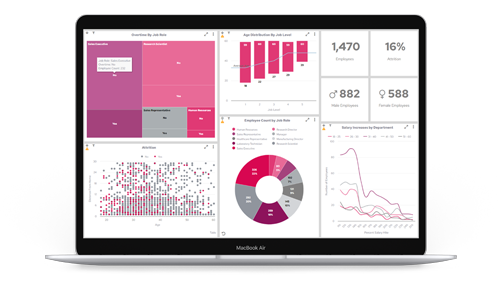What is data quality?
Data quality refers to the condition of a dataset and its ability to serve its intended purpose effectively. High-quality data is accurate, complete, reliable, and relevant. It is free from errors and inconsistencies, making it suitable for analysis and decision-making. Ensuring high standards involves various processes, including data validation, cleaning, and governance, to maintain the integrity and usability of the data.
Why is data quality important?
High-quality data ensures that the insights derived are accurate and actionable. Poor data can lead to misguided decisions, which can be costly for any business. Therefore, maintaining high standards should be a top priority for any organization.
Data quality impacts various aspects of a business, from customer satisfaction to operational efficiency. For instance, in the Healthtech industry, inaccurate data can lead to incorrect diagnoses or treatment plans. In Fintech, poor data can result in financial losses or compliance issues. Thus, understanding the importance of maintaining high standards is the first step towards implementing best practices.
Here are some key reasons why data quality is important:
- Enhanced decision-making: High-quality data enables organizations to accurately identify key performance indicators (KPIs) and assess the effectiveness of various programs. This empowers teams to make informed improvements and drive growth, giving organizations a competitive edge.
- Streamlined operations: Reliable data helps teams identify inefficiencies and breakdowns in operational workflows. This is particularly crucial in industries like supply chain management, where real-time data is essential for inventory tracking and logistics.
- Elevated customer experience: Quality data offers deep insights into target audiences, enabling marketing and sales teams to integrate data across the customer journey. This integration helps tailor messaging, optimize marketing spend, and enhance sales strategies, ultimately leading to better customer engagement and satisfaction.
How do you ensure data quality?
Implement data validation techniques
Data validation is the process of ensuring that data is accurate and meets the required standards. Implementing validation techniques can help maintain high standards. These techniques include data type checks, range checks, and consistency checks.
For example, data type checks ensure that the data entered matches the expected data type, such as numeric or text. Range checks verify that the data falls within a specified range, while consistency checks ensure that the data is consistent across different datasets. By implementing these techniques, organizations can prevent errors and maintain data integrity.
Utilize data cleaning tools
Data cleaning involves identifying and correcting errors in the data. Utilizing cleaning tools can help maintain high standards. These tools can detect and correct errors such as duplicate records, missing values, and inconsistencies.
Cleaning tools can also standardize data formats and remove irrelevant data. For instance, in the Retailtech industry, these tools can help ensure that customer data is accurate and up-to-date. By utilizing these tools, organizations can improve the quality of their data and enhance their analytics capabilities.
Ensure data security
Data security is a critical aspect of maintaining high standards. Ensuring that data is secure from unauthorized access and breaches is essential. Organizations should implement robust security measures to protect their data.
These measures include encryption, access controls, and regular security audits. For example, multi-tenanted security can help ensure that data is isolated and secure for each tenant. By ensuring data security, organizations can maintain the integrity and confidentiality of their data.
Promote data literacy
Data literacy involves understanding how to read, interpret, and use data effectively. Promoting literacy among employees can help maintain high standards. When employees understand the importance of data quality and how to manage data effectively, they are more likely to follow best practices.
Training programs and workshops can help improve data literacy. For instance, employees can learn about data governance, validation techniques, and cleaning tools. By promoting data literacy, organizations can ensure that their employees are equipped to maintain high standards.
Monitor and report data quality
Regular monitoring and reporting are essential for maintaining high data standards. Organizations should implement metrics and dashboards to track data quality over time. These metrics can include data accuracy, completeness, consistency, and timeliness.
Scheduled reporting can help identify issues and track progress towards data quality goals. For example, self-service dashboards can provide real-time insights into data quality metrics. By monitoring and reporting, organizations can ensure that their data remains reliable and actionable.
Leverage predictive insights
Predictive insights can help anticipate and address issues before they become problematic. By leveraging predictive analytics, organizations can identify patterns and trends that indicate potential data quality issues.
For instance, predictive insights can help identify data anomalies or inconsistencies that may indicate errors. By addressing these issues proactively, organizations can maintain high standards and improve their analytics capabilities. Predictive insights can also help optimize data management processes and enhance operational efficiency.
How to measure data quality?
Measuring data quality is crucial for ensuring that your data meets the necessary standards for accuracy, completeness, and reliability. Here are some key metrics to consider:
- Accuracy: Measure how closely data values match the true values. This can be done through data validation techniques and cross-referencing with reliable sources.
- Completeness: Assess whether all required data is present. This involves checking for missing values and ensuring that all necessary data fields are filled.
- Consistency: Ensure that data is consistent across different datasets and systems. This can be measured by checking for discrepancies and ensuring uniform data formats.
- Timeliness: Evaluate how up-to-date the data is. This involves tracking the time lag between data collection and its availability for use.
- Relevance: Determine if the data is relevant to the specific needs and objectives of the organization. This can be measured by assessing the data's applicability to current business processes and decision-making.
- Reliability: Measure the dependability of the data over time. This involves tracking the frequency of data errors and inconsistencies.
Conclusion
Maintaining high standards is essential for delivering accurate and actionable insights. By understanding the importance of data quality, establishing data governance, implementing validation techniques, utilizing cleaning tools, ensuring data security, promoting data literacy, monitoring and reporting, and leveraging predictive insights, organizations can ensure that their data remains reliable and trustworthy.






















